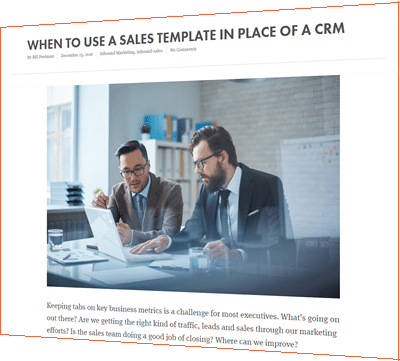 We’re all in this together, right? We’re all trying to make our mark and achieve a level of success in our chosen profession. It’s especially a rare and wonderful trait when we can applaud and celebrate with our competition and their successes, knowing that when all is said and done, we’re all in this together… (right?)
We’re all in this together, right? We’re all trying to make our mark and achieve a level of success in our chosen profession. It’s especially a rare and wonderful trait when we can applaud and celebrate with our competition and their successes, knowing that when all is said and done, we’re all in this together… (right?)
Ok, enough of the sap.
If you really want to steal the show, it’s your positioning statement that’s going to set you apart from your competition. If you don’t have one, you’ll get to watch and (dare I say) applaud your competition’s success. Why? Because it’s your positioning statement that can address the issue at hand and, at the same time, reach the very heart and soul of your audience.
What is a positioning statement? It is an internal, non-emotional statement that becomes the messaging cornerstone of an integrated marketing campaign. Similar, but not to be confused with a tagline or slogan, your positioning statement is what defines the benefit of your product / service to your target customer and conveys how you’re different from your competitors. Conversely, a tagline or slogan is usually a catchy, branding one liner that conveys how you want to be perceived by your target customer. What’s nice, is once you’ve developed your UPS, you can then use it to develop a tagline or slogan for your company or product.
Know thyself is your first order of business.
“If you don’t know where you’re going, it doesn’t matter which way you go.”— Cheshire Cat, Alice in Wonderland
Define your capabilities and talents along with your objectives and mission statement. Be bold but be sober as well. Today’s most important business and marketing directives are built upon trust, therefore, don’t over promise and under deliver on your goods and/or services and thus, ruin your reputation on opening night. When you assess your capabilities from this perspective and with integrity and an accurate assessment as your foundation, you’ll have a clear direction and solid foundation from which to build upon.
To develop your unique positioning statement, there are four components that need to be addressed and incorporated. As you read below, take notes on the following:
Know your audience. For any strategy to work, you have to appeal to someone. Better yet, develop your marketing objectives around a narrowly defined client and niche market and you’ll be able to think very personally about how to serve them. Without this, it’s like a shot in the dark whether you’ll address any of their concerns, let alone, make any kind of impression. Conversely, when you do know your audience, your ability to connect and develop a deep rapport is greatly enhanced and this is where trust begins to develop. To do this, take some time to develop your buyer persona(s) and really get to know who your ideal buyer is and what makes them tick.
Sex appeal. Be different and definitely, take this step seriously. This is the frame of reference where you convey a meaningful picture and the competitive edge over which your approach, product or service will entice your audience. This is a key element of your positioning statement because it’s in this context where it references the category or industry in which you compete, and where the options or alternatives you provide differentiates you from your competition. If you don’t take this step seriously, your audience will default to price comparison and might have little reason to choose you.
What’s in it for me? Admit it, this is a universal question, therefore you need to know how to answer for your audience. Why should your audience give you their attention, let alone their money? To capture the hearts and minds of your audience, you must convey the most compelling benefit your brand provides that, again, your competition doesn’t. Is there something in your industry that frustrates your customer and you can alleviate? Do you have a special way of doing things that your customers truly value? If not, discover something that will set you apart and give it to your all.
Give your audience a reason to believe. This is oh so crucial, because without some convincing proof that you can provide something your competition can’t, and that you’re able to deliver on your promise, your message becomes a lofty claim that people will roll their eyes at.
Positioning Statement Templates
There are various ways to develop your statement, but these are two of the most common from which you can build:
Template #1:
(Product / Service / Company / Person) is the one (frame of reference) that provides (your target customer) with (your key benefit) because (reason to believe you can deliver the benefit).
Template #2:
For (your target) who wants / needs (reason to buy your product/service), (your product or service) is a (frame of reference) that provides (your key benefit). Unlike (your main competitor), (your product/service) (your key differentiator).
While your positioning statement is not a magic wand that will suddenly tip the scales in your favor, like your mission statement, it can provide a framework from which to do business and will provide a set of criteria for your audience use as a comparison factor, thereby setting you apart from the competition.
Knowing your target audience and the reasons why your product or service provides the answer to your market’s pain, the benefits they’ll receive, understanding your competition and what differentiates you from the rest is at the core of inbound marketing as well…





